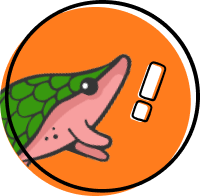





1. Other birds have wings for flying, while penguins have flippers to help them swim in the ocean. But, millions of years ago, these flippers were wings. 2. Large groups of penguins can be found in countries such as New Zealand, Australia, Chile, Argentina and South Africa. 3. Penguins cannot taste bitter, sweet or savoury flavours. Those tastes are not needed because penguins hunt for food in cold, salty water. And they usually swallow their prey whole, including fish, shrimp and squid. 4. Penguins can drink sea water, even though it is very salty. Humans cannot drink sea water. Don't try it! 5. Penguins store oxygen in their muscles for long dives underwater.


1. Other birds have wings for flying, while penguins have flippers to help them swim in the ocean. But, millions of years ago, these flippers were wings. 2. Large groups of penguins can be found in countries such as New Zealand, Australia, Chile, Argentina and South Africa. 3. Penguins cannot taste bitter, sweet or savoury flavours. Those tastes are not needed because penguins hunt for food in cold, salty water. And they usually swallow their prey whole, including fish, shrimp and squid. 4. Penguins can drink sea water, even though it is very salty. Humans cannot drink sea water. Don't try it! 5. Penguins store oxygen in their muscles for long dives underwater.


The evolution of penguins is one of the wonders of the animal kingdom. Once upon a time, they could fly. So how did they evolve from flying birds into the flightless penguins of today? And why did they change from living on land to living in the sea? Scientists have recently found out more information. They looked back to the origin of penguins more than 60 million years ago. They wanted to find out how penguins can see underwater, and how they can dive for so long. The scientists looked at the DNA of the 20 living penguin species. DNA is called "the building blocks of life" because it holds all the information about a living thing. All of today's penguins evolved from one ancient ancestor. Penguins first evolved the ability to dive under the water, and then they lost the ability to fly. They adapted to an ocean life, becoming excellent swimmers and divers. "To me, penguins are a perfect example of a major evolutionary change, like the evolution of flight by bats," says palaeontologist Daniel Ksepka. "We know penguins evolved from flying birds, but that happened over 60 million years ago. We need to look at fossils to work out where, when and how that happened." Why is Daniel interested in penguins? "Penguins are ridiculously charming creatures," he says. "They love, they fight, they steal. And because of their funny upright posture, it's really easy to imagine them having the same thinking as people." Penguins live mainly in the Southern Hemisphere, in cold places like Antarctica. The Galapagos penguin is the only one that lives north of the equator. Penguins were once much larger than they are today. One species, Kumimanu biceae, that lived in New Zealand about 58 million years ago, stood about 1.8 metres tall. The largest penguin today, the emperor penguin, is about 1 metre tall.



a person who studies fossils
the chemical in the cells of animals and plants that carries genetic information and is a type of nucleic acid (the abbreviation for ‘deoxyribonucleic acid’)
the point from which something starts; the cause of something
not long ago
(of birds or insects) unable to fly
the slow steady development of plants, animals, etc. during the history of the earth, as they adapt to changes in their environment

a person who studies fossils
the chemical in the cells of animals and plants that carries genetic information and is a type of nucleic acid (the abbreviation for ‘deoxyribonucleic acid’)
the point from which something starts; the cause of something
not long ago
(of birds or insects) unable to fly
the slow steady development of plants, animals, etc. during the history of the earth, as they adapt to changes in their environment